As business owners set up their online presence, choosing the right email marketing platform is one of the most important decisions. SendGrid and ReSend are two top providers of email marketing and transactional email services, helping over 180,000 businesses streamline their email communications.
Selecting the optimal platform is key for providing seamless subscriber engagement and maximizing deliverability to customers’ inboxes.
In this article, we’ll compare SendGrid vs ReSend across eight criteria: market position and popularity, ease of use, design and customization, features and functionality, performance, customer support, pricing, and reviews.
This comprehensive analysis will help entrepreneurs discern the strengths and weaknesses of each platform concerning their business priorities.
1. Understanding the Basics
Founded in 2009, SendGrid started as an email infrastructure company providing transactional emails and marketing services. Their founders are Isaac Saldana, Jose Lopez, and Tim Jenkins. Today, SendGrid has over 80,000 customers and delivers over 63 billion emails per month, making it an industry leader.
ReSend was founded in 2022 by Zeno Rocha. As a newer platform, ReSend doesn’t have the same brand name recognition. However, their fully-featured free plan has quickly attracted over 100,000 users.
In terms of market position, SendGrid is currently ranked 3rd with 16% market share trailing MailChimp and Constant Contact. Resend would rank further down around 15th but has strong and fast-growing popularity.
2. Features and Functionality
Automation
SendGrid
SendGrid offers robust email automation capabilities through its Workflows feature. You can create multi-step sequences based on user actions, inaction, time delays, or other triggers.
The Workflows tool supports if/then conditional logic, split testing different email variants, user tags and filters for dynamic segmentation, and more.
Some popular automation triggers that the Workflows feature enables include sending welcome emails to new subscribers, setting up birthday or anniversary messages, re-engaging inactive users with re-subscribe campaigns, and segmenting your contact database for targeted communications.
Additionally, SendGrid’s email marketing automation builder offers AI-powered features to provide subscribers with individualized content recommendations within automated sequences. Overall, SendGrid provides enterprise-level marketing automation for sophisticated, customized sequences and campaigns.
Resend
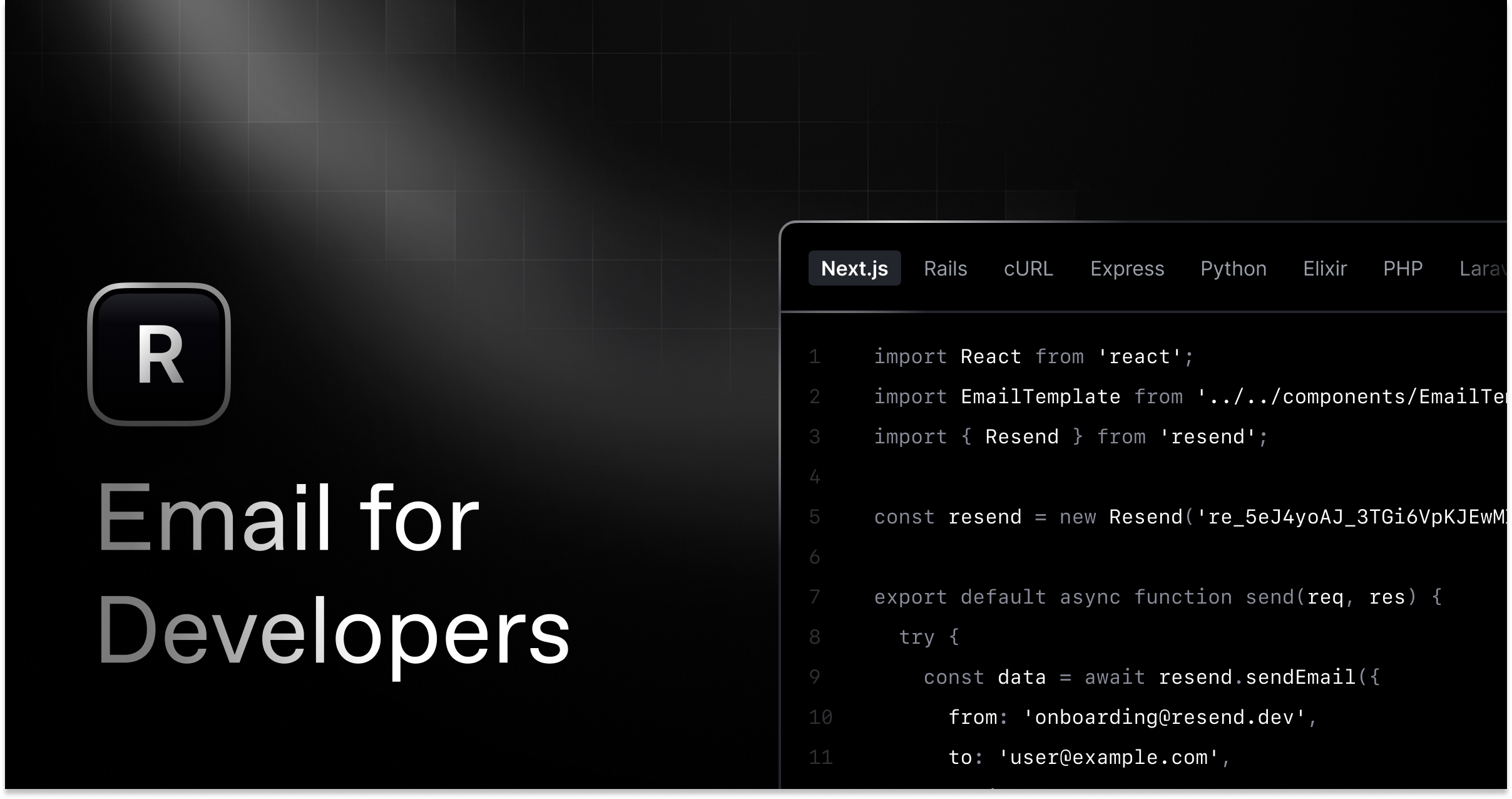
While ReSend does offer automation features, it focuses more on streamlined options optimized for small businesses versus complex functionality.
The platform lets you create automatic welcome sequences when new users sign up, basic email drips based on date triggers or user subscriptions, and re-engagement messages to reactivate inactive contacts.
Although ReSend doesn’t have robust conditional logic or intricate triggers, it does allow you to segment your subscribers and then target those custom groups with a tailored automation series.
For users interested in pre-built sequences instead of designing their own, ReSend also offers a template library covering common email marketing use cases.
In summary, ReSend provides straightforward automation capabilities for basic email marketing needs, while SendGrid is better suited for more advanced, editable sequences capable of managing complex logic at scale.
Winner: SendGrid
The winner for best email automation is SendGrid. Its marketing automation builder brings customizable workflow tools. While ReSend automation can cover the basics well, SendGrid offers superior functionality for segmented, targeted, and dynamic campaigns that you can run from any modern web browser.
Its sophisticated platform is ideal for mid-market and enterprise-level brands that require tailored, automated sequences that engage each subscriber meaningfully.
Email Templates
SendGrid
SendGrid offers hundreds of professionally designed email templates covering common use cases like welcome campaigns, product announcements, newsletters, holiday promotions, and more. Transactional email templates are mobile-responsive and optimized for major email clients.
In the template editor, you can easily customize fonts, colors, and images directly within SendGrid without coding. It provides a simple drag-and-drop WYSIWYG interface for modifying template structure and content. You can also leverage dynamic content tags to automatically pull in subscriber data.
While you can get started quickly with pre-made templates, SendGrid also makes it simple to code your HTML templates from scratch if you need that level of customization. Overall, its templates combine great design and flexibility.
Resend

ReSend also provides great transactional email service thanks to expertly-designed responsive email templates for most standard business needs. Their template library includes many categories similar to SendGrid like newsletters, promotions, welcome series, etc.
However, ReSend’s template editor is not as robust. There is no drag-and-drop editing, so you either have to edit the raw HTML code or use their basic text field to change a few content areas of imported templates. This makes it more difficult to customize beyond switching images or altering some text.
So while ReSend provides nice-looking templates to start with, lack of editing functionality means less ability to tailor templates to your brand.
Winner: SendGrid
The winner for best email templates is SendGrid for offers hundreds of polished templates that also provide easy drag-and-drop editing tools right inside the SendGrid interface to customize them as needed without coding expertise.
While both platforms have great templates, SendGrid’s superior editor makes personalizing templates simple.
Segmentation
SendGrid
SendGrid provides advanced segmentation options to group contacts based on behaviors like email opens, clicks, activity metrics, non-engagement, and more. You can create dynamic segments using custom filters and real-time user data.
Additionally, SendGrid offers statistical segment building. You define parameters like email engagement thresholds, and SendGrid will automatically populate a segment with matching subscribers. Other segmentation methods include email parsing, behavioral triggers, and machine learning clusters.
Once contacts are segmented, you can target groups in dedicated email campaigns, create automation workflows and journeys for each group, personalize content, track engagement metrics per segment, and leverage additional add-ons like multi-variate testing specifically on each audience cluster.
Overall, SendGrid provides deep segmentation capabilities for extremely targeted communications.
Resend

ReSend enables you to create segments manually by tagging subscribers or through basic filters by attributes like email domain, location, purchase history, etc. However, it lacks robust behavioral triggers or statistical grouping.
You can send emails directly to list segments in ReSend to target groups appropriately. Automation workflows also allow you to identify segments to receive specific series. So the basics are there.
But in general, segmentation options are nowhere near as advanced compared to SendGrid, limiting options for advanced personalization.
Winner: SendGrid
The winner for best segmentation is SendGrid for enabling not only simplified manual grouping but next-level dynamic and automated clustering powered by behavioral signals and machine learning. This makes hyper-targeted, 1:1 marketing possible at scale.
While ReSend covers the fundamentals, SendGrid’s superior segmentation tools deliver the precision large brands need.
Analytics
SendGrid
SendGrid provides robust email analytics and insights with its built-in Reporting dashboard. It offers an intuitive visual interface showing opens, clicks, bounces, unsubscribes, spam reports, and more in real-time. You can filter reports by campaign, period, categories, and other parameters.
Additionally, SendGrid integrates with external analytics platforms like Google Analytics, Mixpanel, and Heap for connecting email data with your website analytics. It also offers a dedicated Email Activity Feed API for piping data directly into data warehouses or BI tools.
Other key reporting features include A/B testing capabilities, multivariate testing, predictive inbox placement metrics, email engagement scoring, and advanced analytics like predictive models. Overall, SendGrid is designed to help power data-driven optimization.
Resend
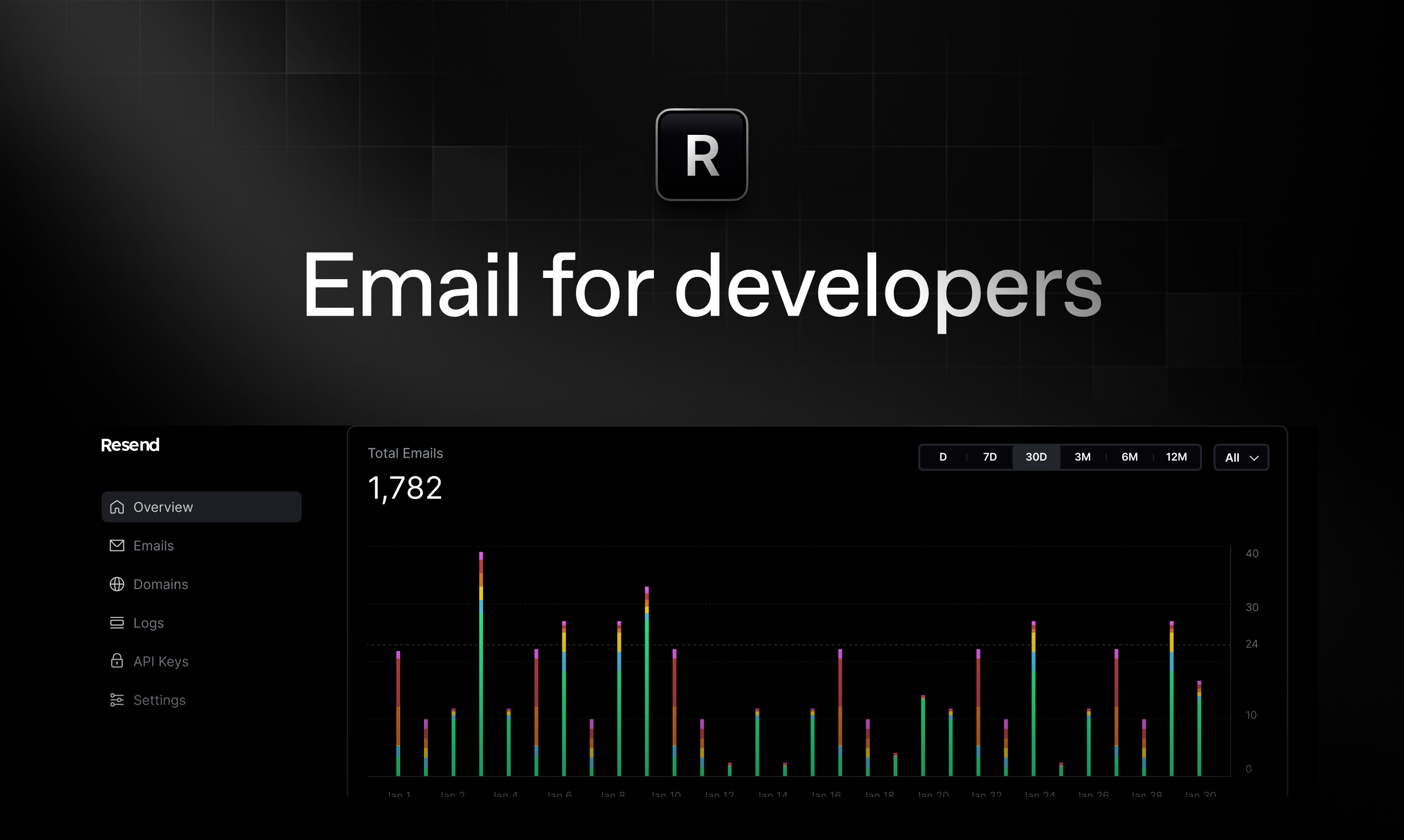
ReSend provides basic email analytics covering open/click tracking, link analysis, bounce/spam filtering reports, and subscriber engagement over time. It generates easy-to-digest visualizations and charts for individual campaigns or cumulative data. You can also export raw data.
However, analytics are quite basic and fixed in terms of the data surfaced. There isn’t support for additional analytics integrations, making it difficult to connect ReSend’s email data with tools like Google Analytics. Compared to SendGrid, the reporting functionality feels limited.
Winner: SendGrid
The winner for analytics and reporting is SendGrid. It offers significantly richer data dashboards covering more metrics as well as better support for both internal tests and external analytics connections.
While ReSend handles email fundamentals well, SendGrid provides the superior framework for data-driven optimization and strategic decision-making that enterprise brands need.
Unique Features
SendGrid
SendGrid stands out for several innovative technologies and capabilities that provide unique value not found in most other email service providers:
SendGrid’s A/B Testing allows you to perform real-time split tests of email content, design, sending times, subject lines, and other parameters to see what resonates best with your subscribers.
Email Validity Processing is another rarely found capability where SendGrid allows you to validate email addresses to determine the accuracy of each address, weed out unsafe email addresses, and check for potential deliverability issues before you send any emails out.
In summary, these innovative features that optimize deliverability, provide deeper analytics, and increase subscriber engagement through personalization and testing are what set SendGrid apart from most basic ESPs. Enterprises get way more value from these exclusive capabilities.
Resend

On the other hand, ReSend focuses primarily on providing just the core email marketing capabilities like templates, basic automation, contact management, segmentation, drag-and-drop builders, and rudimentary reporting.
Beyond the email fundamentals, they do not offer any proprietary innovations or value-added features comparable to SendGrid’s more advanced toolset.
This straightforward approach isn’t necessarily bad, as ReSend aims to provide an easy-to-use service for small businesses rather than robust enterprise solutions.
However, it does mean fewer standout capabilities that more demanding mid-market and corporate customers may require. All in all, ReSend delivers email basics but falls short of the cutting-edge innovations that set SendGrid apart.
Winner: SendGrid
Both SendGrid and ReSend are powerful email delivery services but the winner for unique innovations goes to SendGrid thanks to exclusive functionalities like A/B testing, predictive models, deliverability tools, and real-time event streaming.
Enterprises get more value from these differentiated capabilities not easily found elsewhere. In contrast, ReSend sticks to more commoditized basics. For those wanting leading-edge features, SendGrid excels.
3. Ease of Use
SendGrid
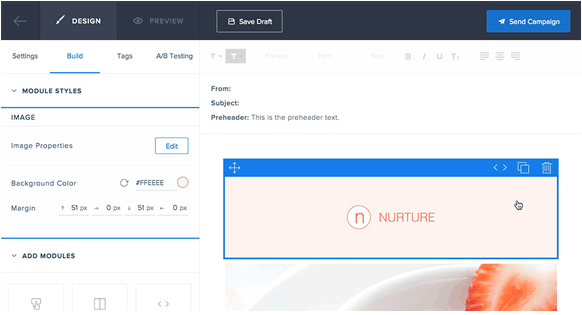
SendGrid provides an intuitive, modern interface with a clean dashboard summarizing key email performance metrics. The sidebar navigation menus are well-organized, allowing you to easily access core features like campaigns, templates, contacts manager, automation tools, and reports.
For beginners, SendGrid offers simplified workflows to tackle common tasks like creating signup forms, sending welcome sequences, building newsletters, etc. Step-by-step wizards guide you to completion. At the same time, power users have access to more advanced options and integrations.
However, SendGrid packs tons of features into its interface which can seem overwhelming for brand new users. There is a bit of a learning curve to grasp the platform fully and master all the features, including mailing list management. The breadth of functionality means a tradeoff against simplicity. But they provide ample educational resources to ramp up.
Resend

In contrast, ReSend focuses heavily on usability out of the box. Their intuitive graphical user interface and streamlined dashboard surfaces only the most important metrics and core email functionality using clean, intuitive menus reminiscent of mainstream apps.
With guided flows for building emails, sending broadcasts, creating automation, and segmenting contacts, new users can get started right away without complexity or confusing settings to decipher. ReSend also offers built-in tips and tricks to learn as you go.
Overall, ReSend prioritizes simplicity through a straightforward editor, dashboard, and feature set catered to small business owners. Their simplified approach improves ease of use compared to SendGrid’s learning curve and density of options.
Winner: Resend
The winner for the easiest platform is ReSend. While SendGrid offers a modern portal as well, ReSend’s simplified interface provides better immediate usability.
The pared-down options let new users quickly create professional emails without battling complexity or hunting through advanced configurations, unlike SendGrid’s steeper learning curve. So for pure simplicity right out of the gate, ReSend delivers.
4. Email Deliverability
SendGrid
SendGrid prioritizes deliverability through a multi-pronged approach. First, they authenticate domains and IPs before sending which verifies validity. Next, machine learning detects high-risk addresses pre-send to scrub lists.
During sends, proprietary algorithms enhance email inbox placement and optimize delivery speed and route emails for maximum inbox placement. Post-send, engagement metrics identify spam traps while reputation monitoring informs sender credibility for future deliveries.
Collectively, these capabilities allow SendGrid to reliably achieve industry-leading 90%+ inbox placement rates for customers. Deliverability is their specialty.
Resend

ReSend is a secure and reliable platform that follows email best practices like SPF/DKIM authentication to enable security and spam filtering avoidance so IPs establish good sender reputations over time.
They also offer bulk email verification catch, signature management spam blocker, and inbox placement reports to be transparent about deliverability while providing some basic tools like blacklist monitoring to stay off denial lists. Contacts are periodically synced too to weed out stale addresses.
However, ReSend doesn’t provide the advanced, proactive deliverability capabilities that SendGrid offers. So performance reliability hinges more upon user list quality rather than optimization.
Winner: SendGrid
The winner for email deliverability is SendGrid thanks to dedicated infrastructure, predictive models, and active optimization at every step. Their entire platform is designed around deliverability in a way no competitor matches.
ReSend follows good practices but their technology doesn’t focus on delivery innovation like SendGrid. For reliability at scale, SendGrid is the leader.
5. Customer Support and Community
SendGrid
SendGrid provides 24/7 customer support via live chat, email, and phone. As an enterprise-focused platform, they offer more expensive plans access to one-on-one account representatives who provide personalized support and proactive account recommendations.
SendGrid also has an extensive suite of self-help resources like documentation, webinars, whitepapers, APIs Explorer, and a library of use case examples and tutorials. Additionally, their active community forum connects over 200k members to discuss product questions and best practices.
Resend
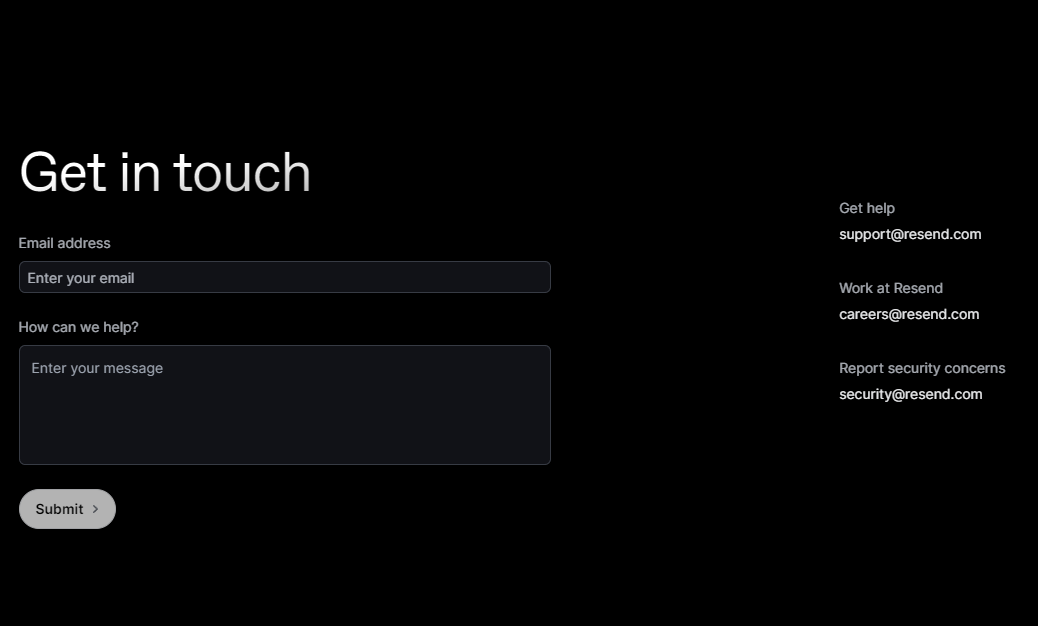
In contrast, ReSend offers more limited support channels – email and in-app messaging during business hours as primary means, without any live chat or phone access even for premium accounts.
Their self-help options are focused primarily on documentation only without additional resources. And while they have an engaged Facebook User Community of over 50k members, their built-in forum isn’t as developed.
This scaled-back approach allows them to keep plans affordable but a lack of live support channels or access to experts could be challenging for larger accounts.
Winner: SendGrid
The winner for best customer & community support is SendGrid for providing integrated live chat and phone along with dedicated account reps for larger customers.
Additionally, SendGrid’s vast self-help resources like webinars, APIs explorer, and active peer forums offer more guidance channels for users at any level.
6. Integrations
SendGrid
SendGrid offers integrations with hundreds of third-party apps via its App Marketplace. Some of the key categories covered include major CRM platforms like Salesforce, HubSpot, and Zoho CRM to track email performance by campaign and sync contact segments between systems.
Additionally, SendGrid provides deep integration with top email marketing platforms such as Mailchimp, Drip, and ConvertKit, enabling users to leverage SendGrid’s deliverability and analytics while still designing in other tools.
For e-commerce, SendGrid lets users embed transactional and cart abandonment-triggered emails directly into leading e-commerce software including Shopify, Magento, and WooCommerce. This streamlines critical customer order updates and promotions.
SendGrid also interconnects with marketing automation systems like Keap Infusionsoft, and Ontraport to facilitate creating workflows that span both SendGrid campaigns and broader lead nurturing sequenced in the marketing platform.
Finally, integrations with web analytics tools like Google Analytics and Mixpanel allow tagging emails to monitor performance from send to website visit in a closed loop.
With Zapier and API integration options too, SendGrid provides hooks into practically any external platform to streamline executions across marketing, sales, and e-commerce systems.
Resend
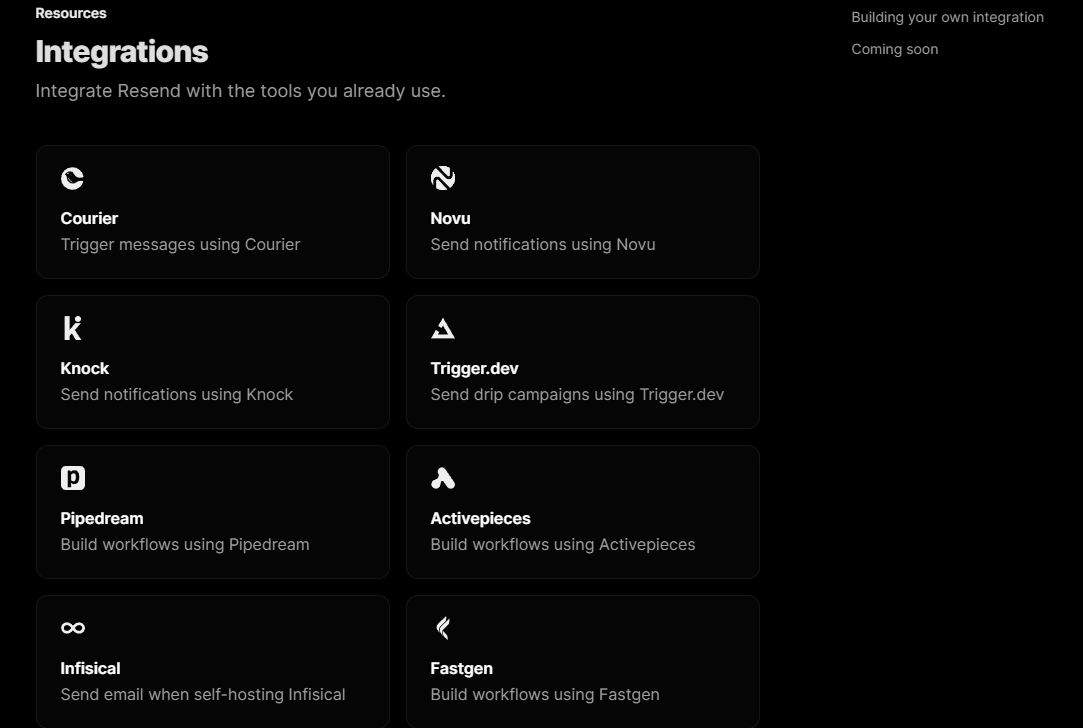
In contrast, ReSend only offers about two dozen basic integrations covering the most popular email marketing platforms like MailChimp and crucial CRMs such as Hubspot, Keap, and Zoho. Additionally, ReSend connects with leading e-commerce solutions including WooCommerce and Shopify.
So while ReSend does cover some core categories, their integration capabilities lack the extensive diversity spanning 250+ marketing, sales, and analytics systems that SendGrid provides.
The pared-down approach is likely intentional to simplify ReSend’s platform, but it means less flexibility for enterprises.
Winner: SendGrid
Both email delivery services have much to offer in terms of integrations, but the winner is SendGrid. Given the vastly wider array spanning martech, sales tech, e-commerce, and business analytics systems – practically any external platform a customer would want to interconnect. ReSend delivers baseline capability but SendGrid provides the robust, bi-directional tools ecosystems demand for sophistication and scale.
7. Pricing
SendGrid
SendGrid offers premium features and deliverability beyond basic ESPs. Pricing scales to match rising account needs across four paid plans:
- Free – 40k monthly emails
- Basic – $15/month billed annually for 100k emails
- Advanced – $60/month annually; volume discounts available at higher monthly sends
Custom enterprise pricing is available for Enterprise plans which come with dedicated IP address options for higher deliverability of online mail, volume aggregation, and premium support.
Common add-ons provide things like more contacts, dedicated IPs, and inbox monitoring at an additional fee. Overall, SendGrid represents advanced capabilities and best-in-class deliverability rather than low-cost sending which is reflected in premium pricing.
Resend
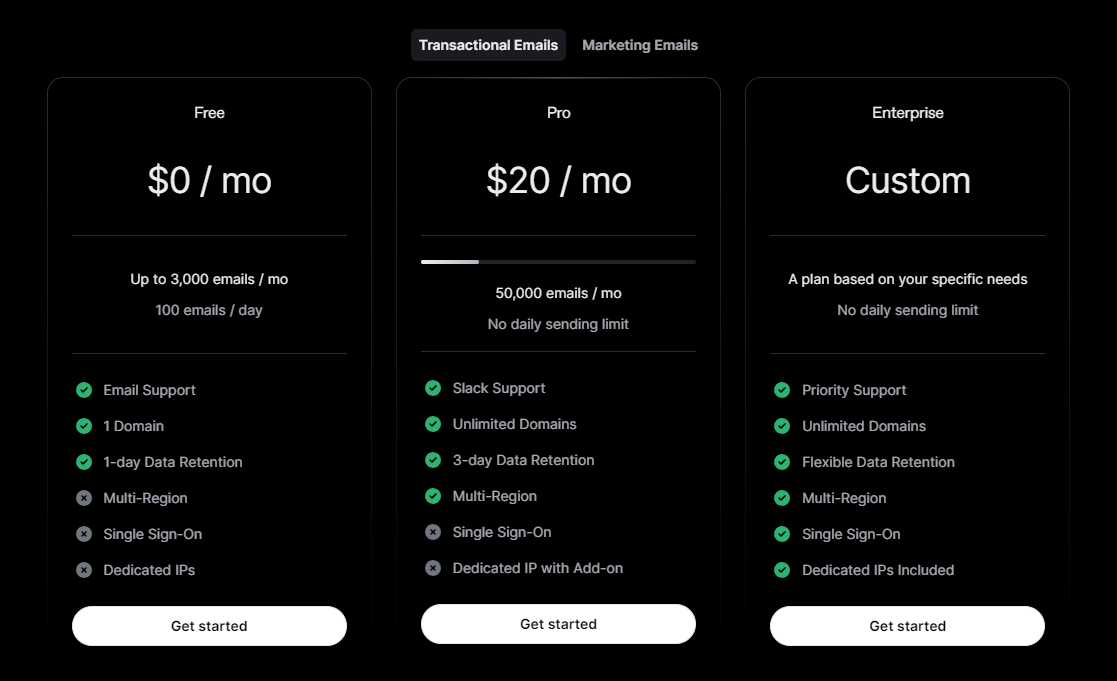
In contrast, ReSend focuses primarily on streamlined SMB functionality with their pricing designed to match:
- Free – Unlimited emails with basic features
- Pro – $20/month annually for 5k contacts and advanced automation
- Custom – Custom pricing for additional features, unlimited resources, and priority support.
Add-ons are limited and primarily offer things like more allowed contacts and dedicated IPs only rather than sophisticated expansions. So again, ReSend pricing aligns with their core SMB positioning and functionality.
Winner: Resend
For strict cost alone, ReSend’s free unlimited plan and streamlined feature tiers make them the winner. Price-sensitive users with basic delivery and campaign needs get a tremendous bang for the buck.
However, SendGrid delivers significantly more capability – just at a steeper price-matching functionality. But those wanting reliability and features on a tight budget are better off with ReSend’s pricing.
8. Reviews and Reputation
SendGrid
SendGrid earns strong reviews across industry analysts and customer feedback, indicative of their market leadership position. G2 scores SendGrid 4.4/5 stars based on 1,500+ verified user reviews highlighting positive performance – especially deliverability, reliability, and support.
PCMag and TrustRadius also showcase 4+ star ratings while Capterra averages a 4.5/5 star rating. The primary pros called out are excellent deliverability, integration ecosystem, and quality customer service. Users also mention features similar to the MailChimp transactional email service. Cons mention some complexity for beginners.
Overall, SendGrid enjoys a reputation as the top premium email service provider for sophisticated needs, albeit at enterprise-level pricing. But most agree the cost brings best-in-class infrastructure.
Read SendGrid user reviews on G2.
Resend
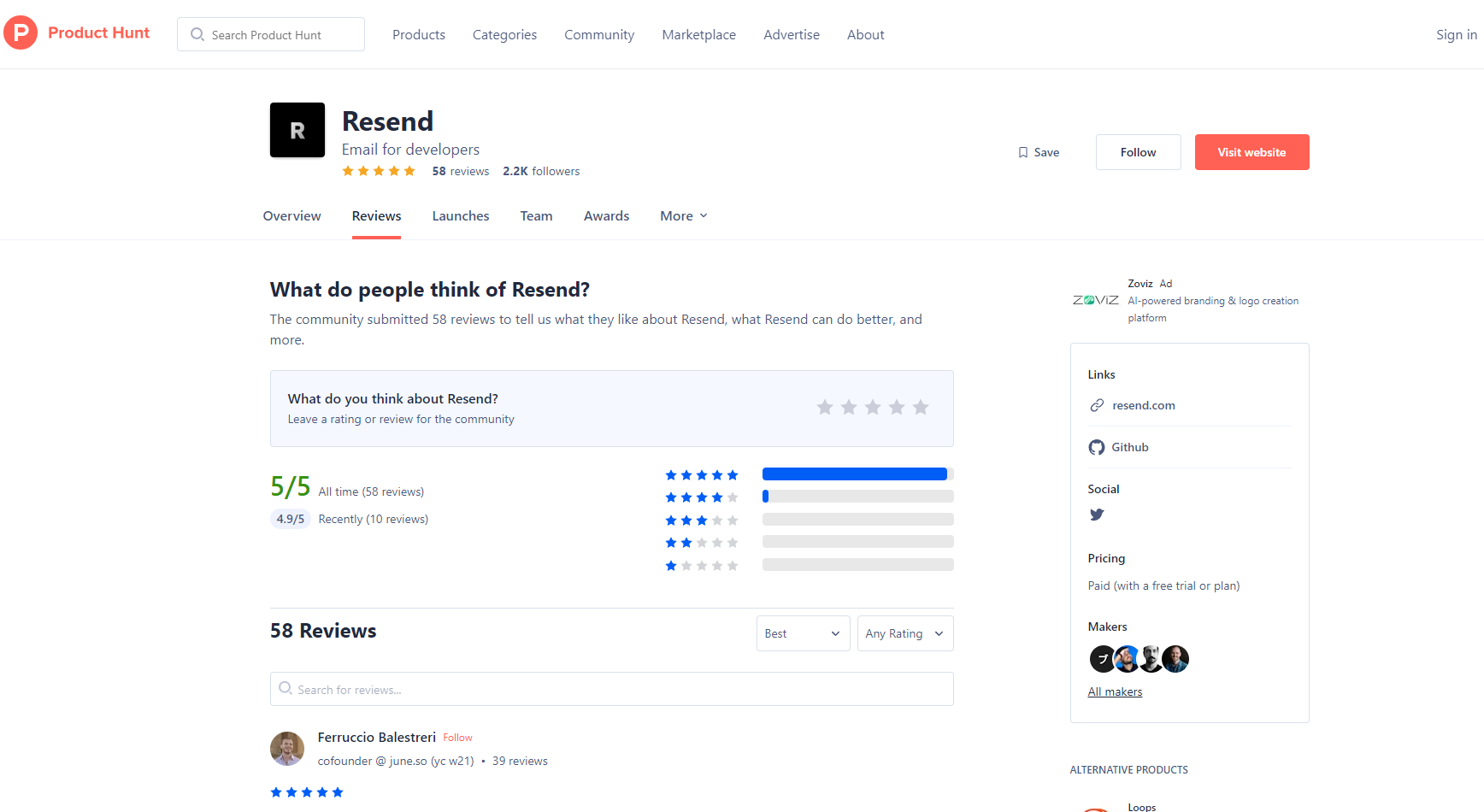
As a relative newcomer, ReSend has limited third-party reviews but does showcase promising customer sentiment so far. Their G2 rating compiles to 4.8/5 stars but only from 14 genuine ratings right now – albeit with effusive praise regarding ease of use, affordability, and automation functionality.
ReSend’s Capterra reviews tell this same story with 5/5 stars across 20 ratings, leaning heavily into positive notes on simplicity and access to basics that “just work” affordably right out of the box.
Being early stage, their reputation is rooted today in straightforward SMB appeal rather than scaled enterprise delivery history.
Read more ReSend users reviews online.
Winner: Resend
For pure reviewer ratings, simplicity-focused ReSend edges out SendGrid slightly, benefitting from a strong but smaller pool of customer advocates.
However, SendGrid’s long-running industry recognition and 1,500+ G2 ratings showcase unparalleled reliability and performance – granted at premium pricing. So ReSend takes ratings but SendGrid owns an outright reputation through sheer track record.
Newbies win on cost and simplicity now but SendGrid still dominates enterprise and deliverability reputation long term.
9. FAQ’s
SendGrid
- What volume of emails can I send monthly?
SendGrid offers monthly email allowances based on the plan, ranging from 40k/month for free users to billions of emails for enterprise customers. Volume discounts also apply at certain tiers. - Does SendGrid integrate with my existing marketing stack?
Yes, SendGrid offers 250+ integrations with leading marketing, sales, and analytics platforms via their App Marketplace and API. - Is SendGrid easy to use for beginners?
While SendGrid packs in advanced functionality, the interface can seem complex for brand-new users. There is a bit of a learning curve compared to stripped-down competitors. But SendGrid provides ample educational resources to get started. - Does SendGrid improve email deliverability?
Deliverability optimization is one of SendGrid’s biggest strengths. Through dedicated IP warming, predictive analytics, and account management, SendGrid reliably achieves 90%+ inbox placement rates.
Resend
- Does ReSend have email creation templates?
Yes, ReSend offers professionally designed responsive email templates for most standard business use cases such as promotions, newsletters, welcome flows, and more. - Is ReSend affordable?
Without question – one of ReSend’s biggest selling points is providing unlimited free emails monthly including basic features, which is impossible to beat on cost. Their paid tiers scale affordably as needs expand too. - What integrations come with ReSend?
Out of the box, ReSend integrates with major email marketing and CRM platforms like MailChimp, HubSpot, and Zoho as well as leading e-commerce solutions such as WooCommerce and Shopify. - How reliable is email delivery with ReSend?
While deliverability isn’t as advanced as premium rivals, ReSend follows best practices around security, sender reputation, and message content compliance to generally achieve strong inbox placement and dependable deliveries.
Final Thoughts
Choose SendGrid if…
You are a mid-market or enterprise business investing in a premium email delivery platform optimized for scalability through dedicated IPs, volume aggregation routing, and proprietary optimization algorithms that few competitors can rival.
This transactional email provider will give you all of those features and more – albeit at a higher cost proportional to the unmatched functionality it enables.
Choose Resend if…
You are an early-stage or growing SMB prioritizing simplicity from the start and needing only core email marketing fundamentals like templates, basic automation, simple analytics, and segmentation capabilities to deploy targeted campaigns affordably as your audience expands.
Selecting the right email marketing provider is foundational when establishing your online presence.
Both SendGrid and ReSend can enable impactful subscriber communications, but aligning capabilities with business maturity and resources is key in determining optimal fit. Ideally, this comprehensive comparison has provided clarity around positioning both platforms well for the right customer needs.
